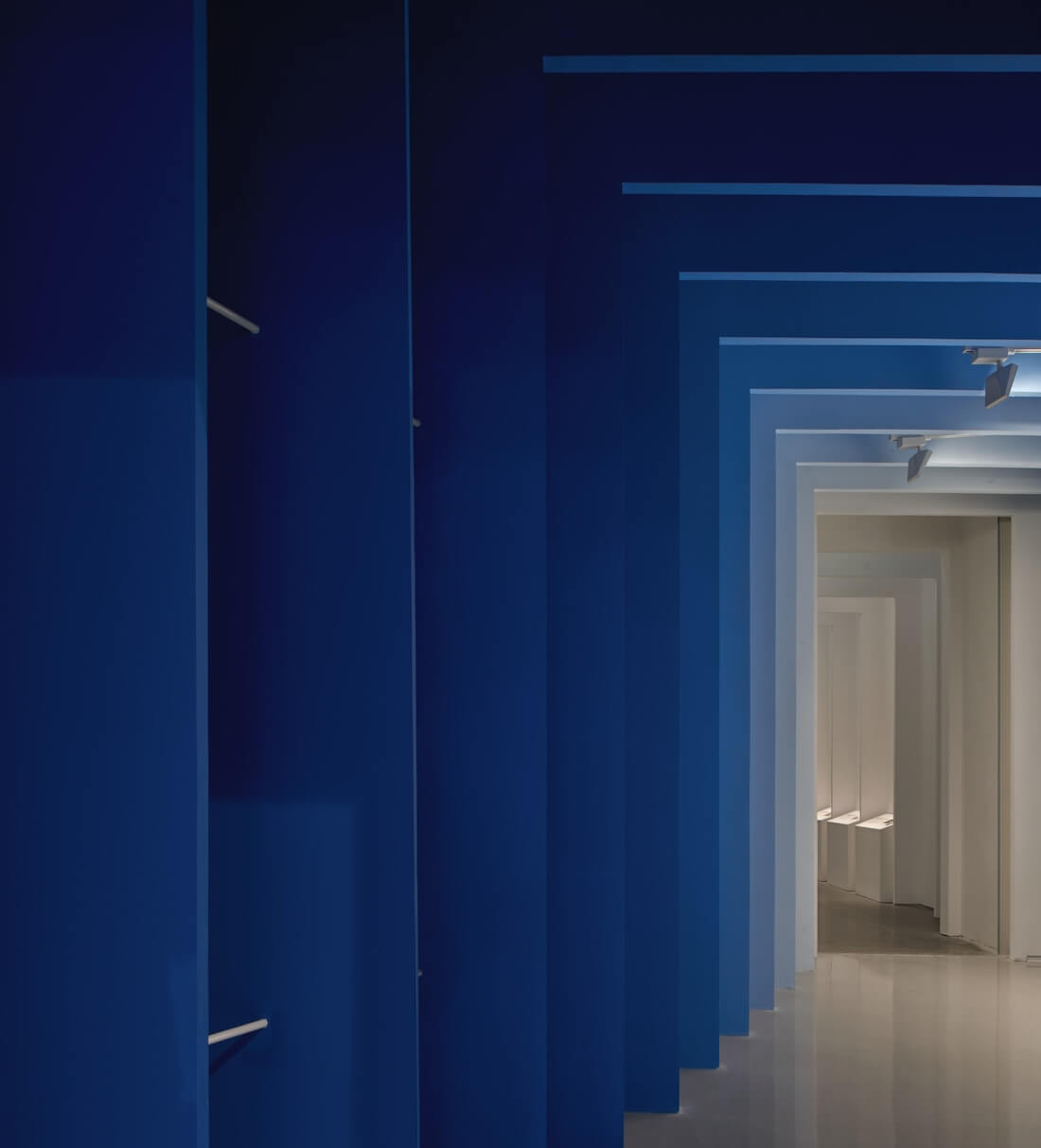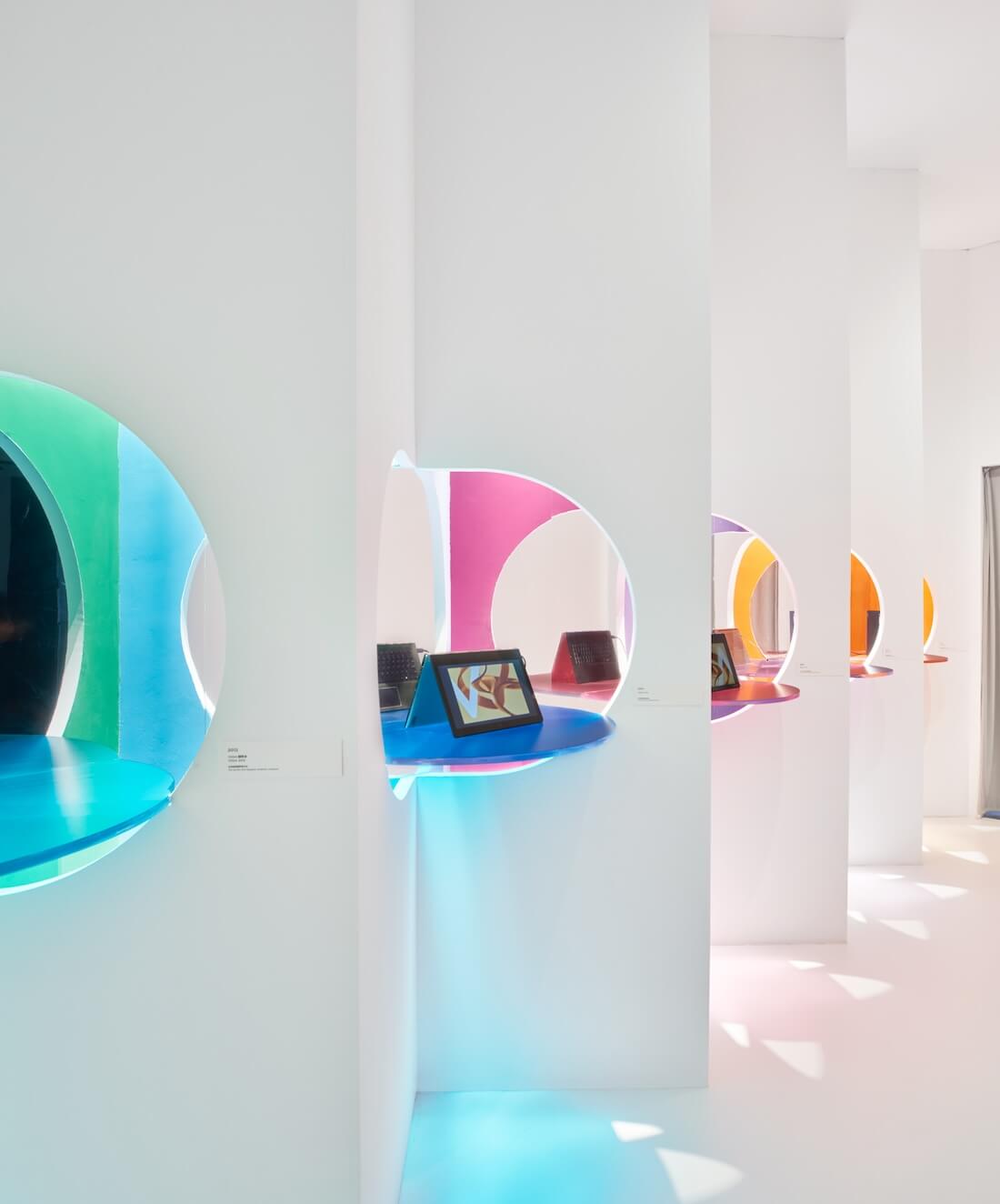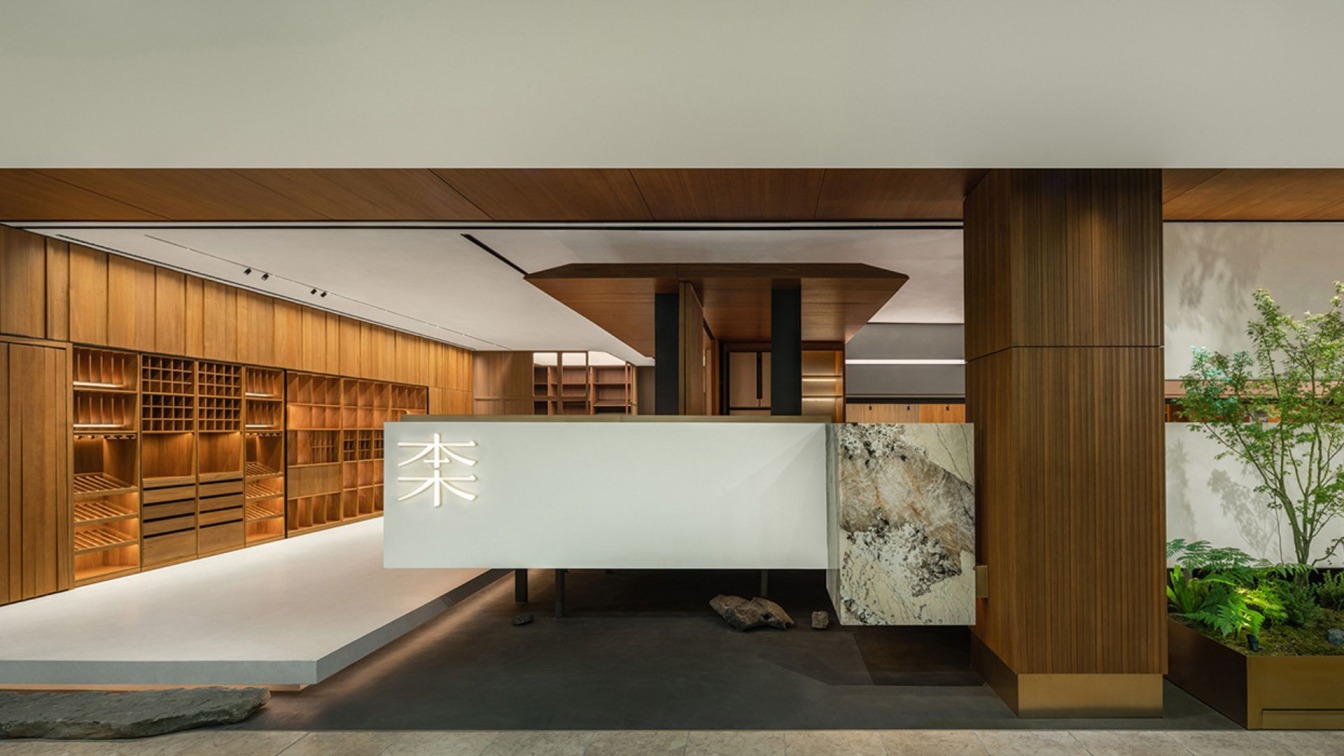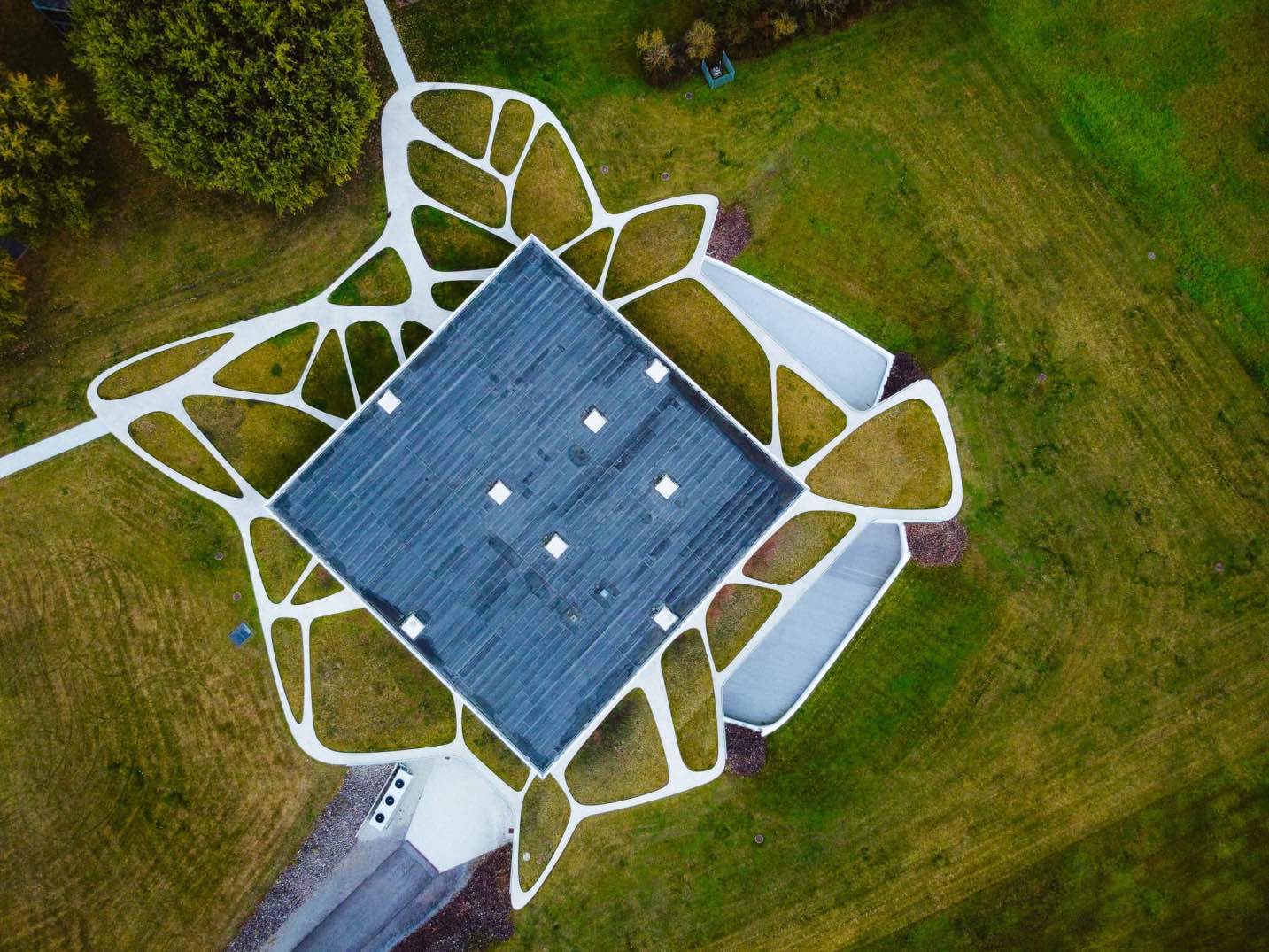「The Future To Be」Exhibition Space Design: Exploring Boundaries and Relationships
"The Future To Be – Evolution of Digital Culture," created by Lenovo Group and UCCA Lab, presents a journey of technological exploration through five chapters: "Future Overture," "Surging Waves," "New Digital Life," "Everything and Everywhere," and "Our Future Selves." With a space of 1190 square meters, Yoshihiko Seki, the founder & director of KiKi ARCHi internalized the changes between humans, electronic devices, and the environment, and turned them into their design logic for the exhibition space. Threaded together by the chronological milestones in technological advancement, the space design provided narration on how digital information across dimensions such as speed, scale, framework, and boundaries.
The space blends abstract architectural elements, utilizing corridors, independent spaces, and interwoven semi-open blocks to illustrate the evolution of digital civilization. Among these, corridors serve as the central framework, acting as "time-space tunnels" delineated by epochs and connecting the five chapters. As each chapter unfolds, visitors' interaction with information within the corridors evolves. Initially, significant Lenovo Events are presented conventionally on display platforms, then transition to walls, acrylic boxes, metal grids, and ethereal mesh fabric. Visitors' perspectives shift from an initial top view to eye level, then to multidimensional observations and upward views. Through subtle changes in material textures, KiKi ARCHi skillfully conveys the gradual dissolution of information framework boundaries, with the media carrying information becoming increasingly ethereal.
Simultaneously, diverse independent spaces enrich each chapter of the exhibition, showcasing artworks that resonate with their respective eras and products from different generations of Lenovo. Notably, the display formats for each product generation are derived from and refined based on their unique characteristics. For instance, the "M" letter projection area corresponds to Motorola phones; the red column area symbolizes the classic TrackPoint of the ThinkPad; the colorful mirrored display area embodies the youthful and innovative traits of YOGA Laptops; and the dark display wall, inspired by a keyboard, pays homage to the gaming laptop "Legion" series.
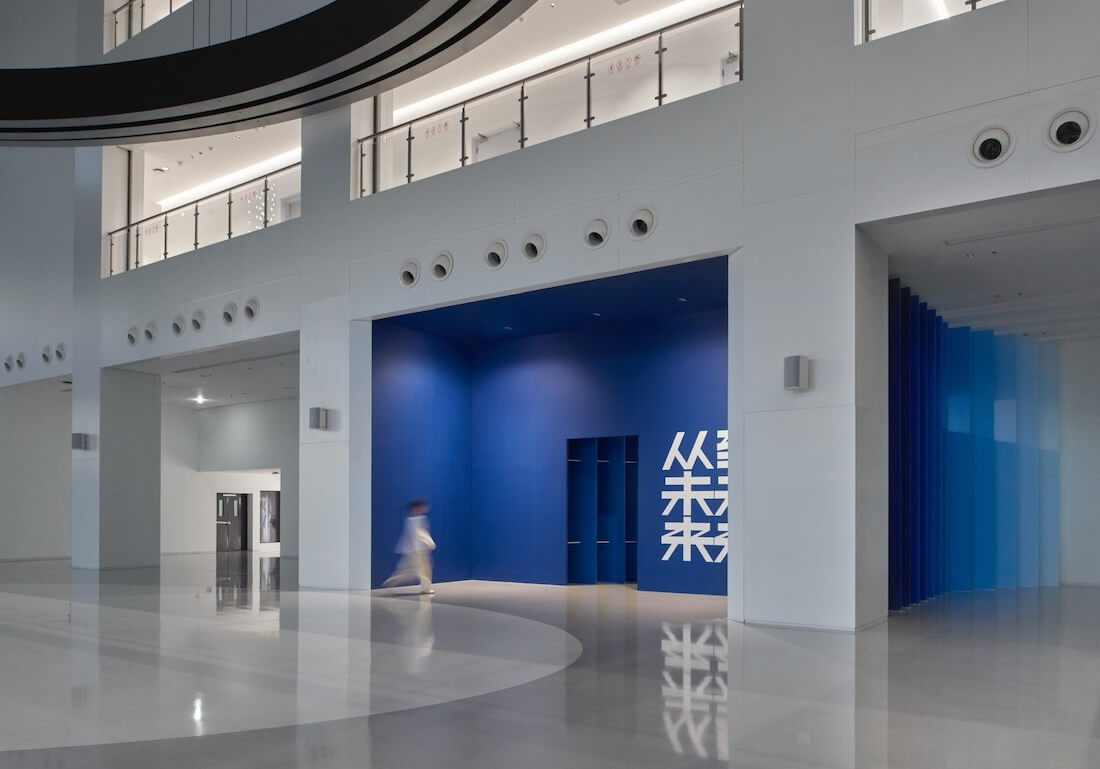
Following the circulation line to the turn, several "windows" on the facade create new visual intersections, resembling dynamic frames capturing scenes and characters from different chapters. Within these spaces, visitors can peer through these "windows" to look back at the past, glimpse into the future, and appreciate humanity's cultivation and harvest in the digital civilization. Moreover, the "windows" themselves serve as design elements, concentratedly arranged in the "dock" of the exhibition's fifth chapter. According to KiKi ARCHi, screens of electronic communication devices are akin to "windows" on buildings, with their size and aperture reflecting the technological advancements and perspectives of humanity at different historical stages, while also foretelling the innovation of boundaries and relationships.
At the end of the exhibition, mirrored pathways and transparent fragments create a tranquil atmosphere. Countless "windows" converge on one side of the dock, arranged from small to large, depicting Tianjin's the history, rivers, and architectural landscapes. They convey to the audience that no matter in the past or the future, amidst the implicit changes, people traversing along the corridor of time, whether wandering or stopping, can always experience freedom and livelihood with the evolution of the "digital civilization," "nature," and "mode of life." While trying to reach a balance among the three, arrive at a future beyond imagination.
Art Installation: Carrying the Known and the Unknown
KiKi ARCHi founder Yoshihiko Seki, in addition to exhibition design, has also been involved in the creation of some art installations. These installations, serving as part of exhibition content, spatial composition, and interactive elements, incorporate Lenovo's various products from different periods as elements, combined with artistic works, depicting the known and unknown of digital civilization.
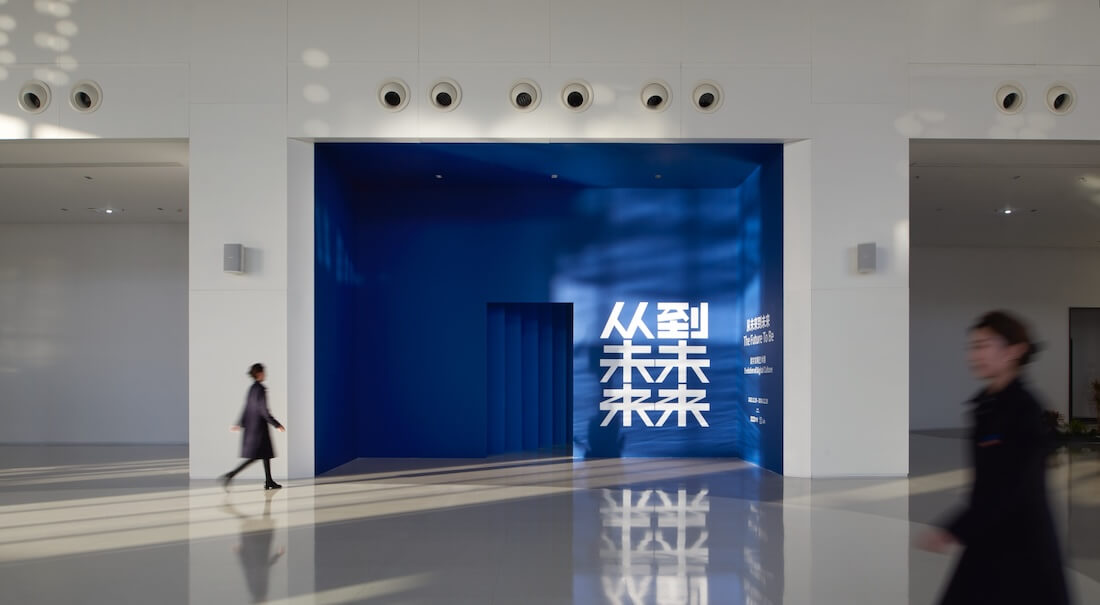
Raven Kwok and Yoshihiko Seki《Flow and Mass》, 2023
Interactive new media installation, Dimensions variable
This work is presented in the second chapter of the exhibition. Information accumulates with the passing of time, forming enormous data "flow;" matters build up in space, conglomerating into physical "mass." New media artist Raven Kwok and Yoshihiko Seki jointly created this interactive installation Flow and Mass, using CRT monitors set up in a 5 x 4 matrix as the medium, illustrating specific phenomena that are particular to certain periods of development in the digital civilization. The 20 stacked vintage Lenovo monitors hang in the air, depicting the epitome of the real economy period. These large computers are tightly aligned, radiating a strong presence, representing the fully stocked shelves with eclectic goods, the original modes of shopping, and the satisfaction from mass consumerism back in the 1990s. The cables wiring under the glass floor signify the springing up of new things, fearless and lively in the flow of time. On the computer screens, the GUl elements from the Windows operating system load the virtual world from when the Internet first came into existence. As personal computers prevailed, the future of form and efficiency became reconstructed. The audience can intervene in the movement of the GUI elements in real-time by controlling the mechanical mouse, and repositioning them in the vast coordinate system. Upon every human-machine interaction, the physical "mass" and the virtual "flow" collide-the changing speed and paths lead people into a magnetic field effect across time and space.
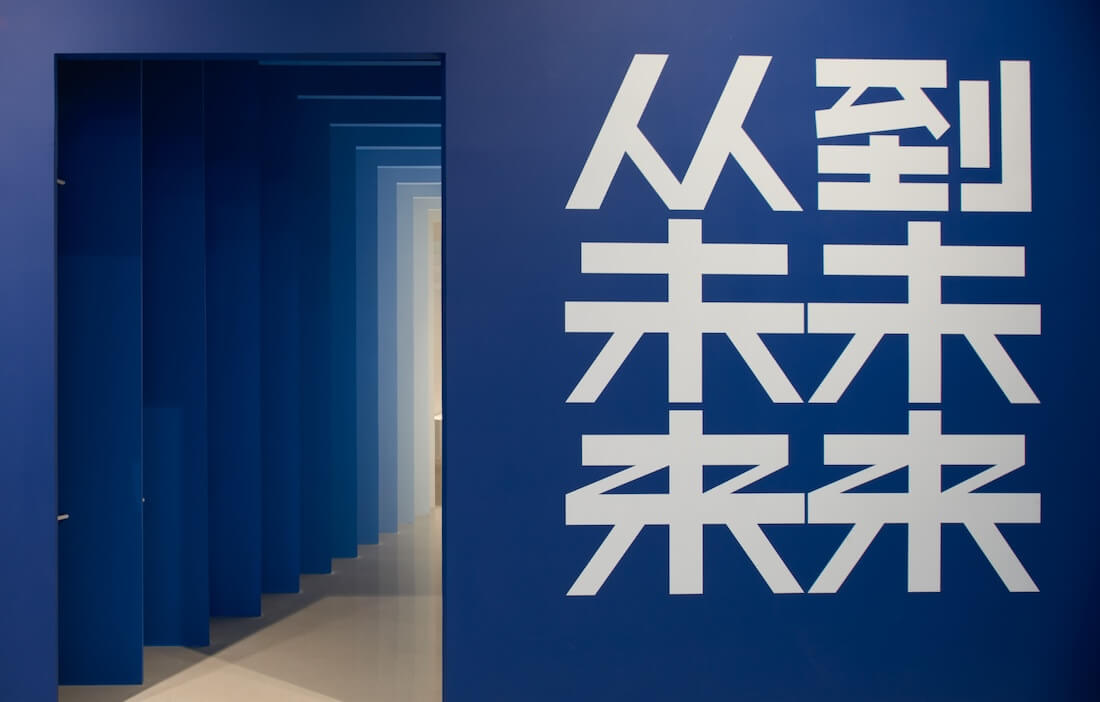
Yoshihiko Seki《Rising》, 2023
Art installation,Dimensions variable
This work is presented in the third chapter of the exhibition. In the natural world, high-energy air currents swirl and ascend, reaching the sky, with their inherent molecular potential continually gaining strength and accumulating, much like the cultivation process of a brand. Yoshihiko Seki has taken "airflow" as the blueprint and created a circular three-dimensional installation that embodies the development journey of the Lenovo brand. The high-standing installation covers an area of 30 square meters and reaches a height of 4.8 meters. It is composed of white steel frames, acrylic boxes, and archive documents representing various development periods of the brand, including products, text information, photos, and items from significant events. From bottom to top, it equally narrates the digital story that began in the 1980s. Nearly 40 acrylic boxes spiral upward amidst the shifting shadows of the light box, as if sunlight penetrates the clouds, pure and lightweight when viewed from the outside, representing the positive and leaping-up attitude of pioneers when they encounter challenges and opportunities of the times. As one steps inside the installation and raises their line of sight, the rich content on display migrates higher and farther in the exchange of information, guiding towards the future of the future.
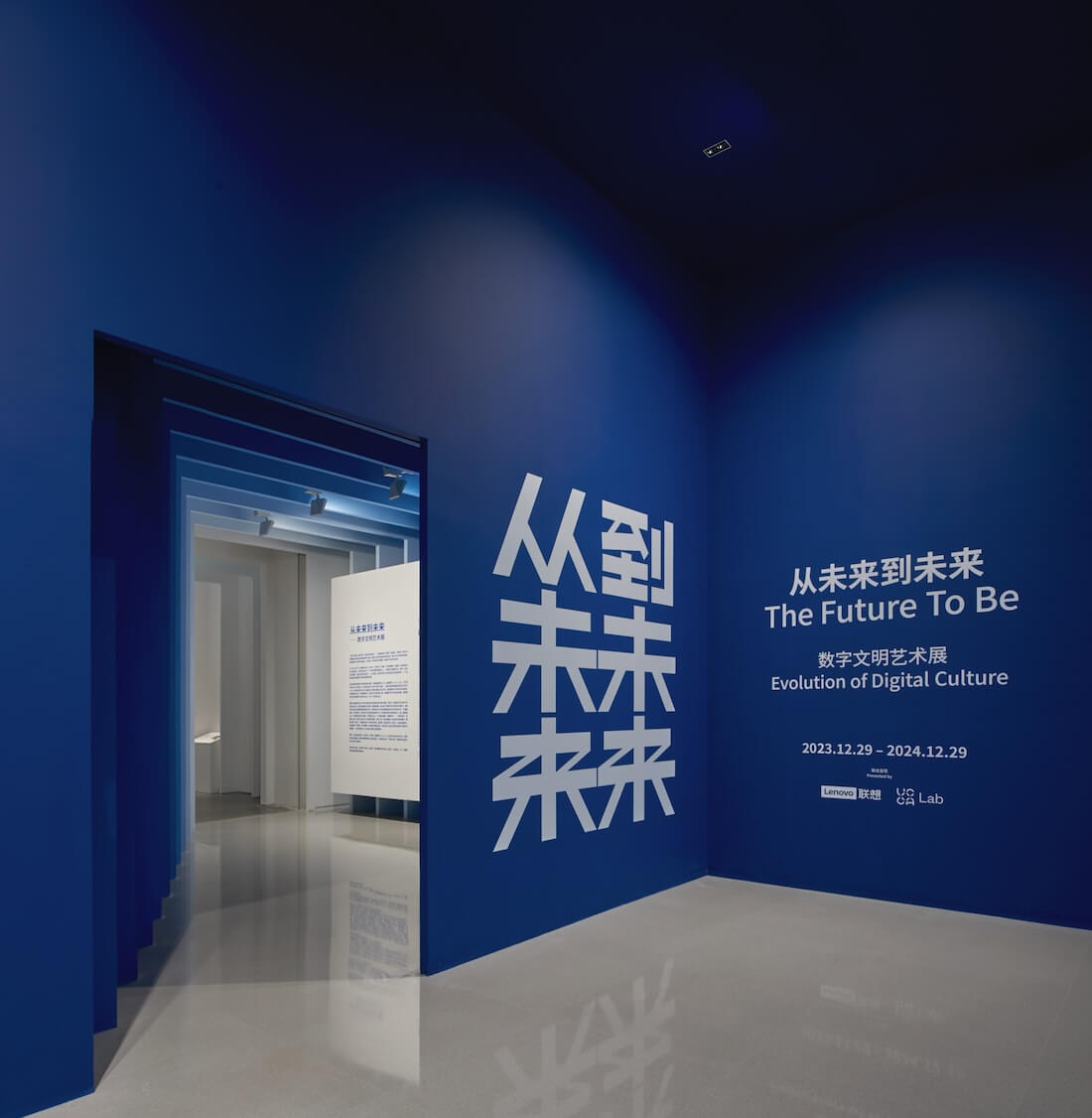
Yoshihiko Seki, 3000LM Lab《Rain》, 2023
Video installation,Dimensions variable
The video installation Rain consists of both a spatial installation and a video artwork, jointly created by spatial designer Yoshihiko Seki and the multidisciplinary artist group 3000LM Lab. This work is presented in the fourth chapter of the exhibition, representing how people break through the physical boundaries of space with the Internet and electronic devices in the age of intelligence. Information, time, location, and language are no longer constrained by designated frameworks, and the real and the virtual start to merge. In the dark space, the light emitted from 18 Lenovo monitor screens leads the audience to walk or stop, as if drifting between different information media, seeking a familiar cultural perception among interactions and uncertainties. The audience will see "the same rain" from different times and spaces on the screens of 18 Lenovo products, metaphorically representing the interconnected world of today, rich with inseparable human spirits.
